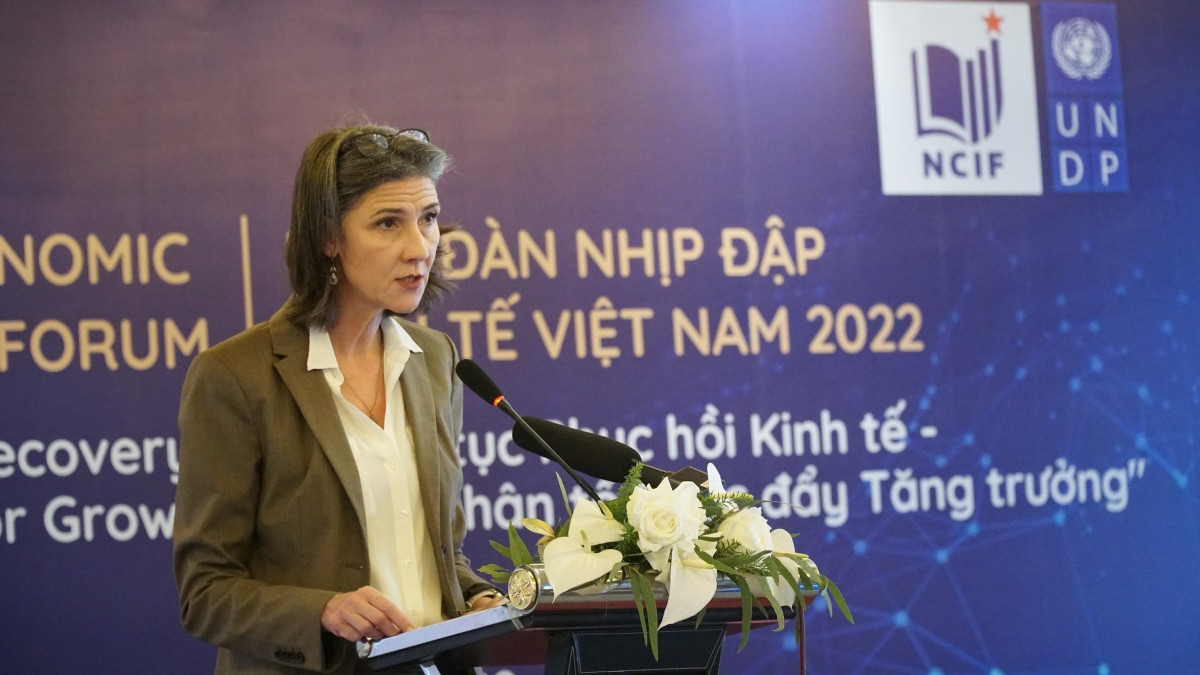

“Evidence of a strong recovery is welcome news after two years of economic disruption caused by the COVID-19 pandemic. Vietnamese households will enter the Year of the Cat in 2023 in better financial shape than a year ago,” she said.
However, the UNDP representative warned there remain external risks to economic recovery, including the outcome of the Russia-Ukraine conflict, an economic slowdown in China, rising international interest rates, the appreciation of the US dollar, and the growing risk of recession in Europe.
These factors could affect demand for Vietnamese exports and increase the risks of macroeconomic instability, she said, adding that policymakers must remain vigilant and adjust the fiscal and monetary policy in a timely manner as global conditions evolve.
Along with these external factors, there are also several domestic risks, especially those in the banking and bond markets, which are sensitive to rapidly changing conditions in the property sector, she noted.
The negative impact of climate change will increasingly weigh on agricultural production and on the health and well-being of communities impacted by rising sea levels, flooding, droughts, and high-intensive storms, she stressed.
In the recent report titled “Global Economic Outlook: Sailing into the headwinds”, Francois Painchaud, resident representative for Vietnam and Laos of the International Monetary Fund (IMF), outlined that with strong growth through September, Vietnamese GDP growth forecast could rise from 6% to 7.5% this year.
However, due to slowing external demand coupled with tighter financial conditions, the growth forecast ahead for 2023 is 5.8%, while inflation is expected to edge up before gradually returning to below 4%, he said.
Policies need to be carefully calibrated, co-ordinated, and communicated, while the State Bank of Vietnam (SBV) should focus specifically on controlling inflation, safeguarding financial stability, and accelerating structural reform, he noted.

In his report “Vietnam Economic Outlook Update” delivered at the forum, Dr. Tran Toan Thang, director of the Industry and Enterprise Economic Forecasting Department under the Ministry of Planning and Investment (MPI), outlined that the economic recovery in 2023 will continue to benefit from the implementation of the 2022 - 2023 Economic Recovery Program.
Vietnam is projected to maintain the target of stabilising interest rates and exchange rates, including keeping interest rates low to support growth, Dr. Thang emphasised.
Nevertheless, he said with fairly high growth this year, Vietnamese economic growth in 2023 will slow down, gradually returning to its pre-COVID-19 state, particularly as the domestic demand rebound may not be as strong as seen this year.
According to the expert, anticipated issues include rising raw material prices beginning to translate more clearly into production costs whilst imports and exports may potentially increase more slowly due to the prolonged difficult situation of the country’s main export markets. In addition, foreign investment attraction is forecast to remain low due to increased global economic risks.
In his opinion, there are two scenarios for the Vietnamese economy this year. In the first scenario, the country’s economic growth may be only between 6% and 6.2%, particularly if risk factors outweigh the established recovery trend seen this year.
In the more optimistic second scenario, economic growth may reach 6.5% to 6.7% if the recovery process is more favourable and the impacts from the international factors are not too big.
Source: VOV